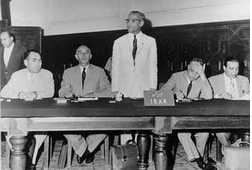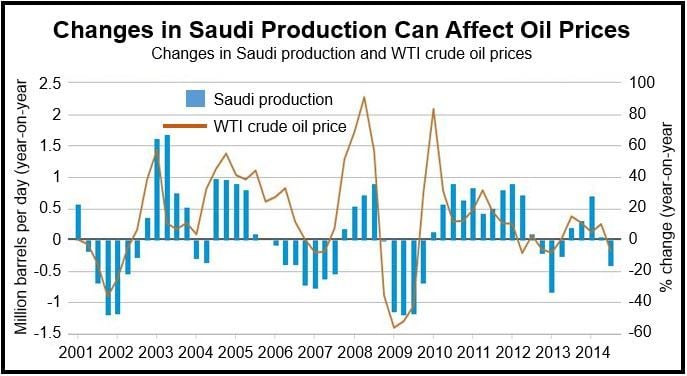What is OPEC?
OPEC stands for Organization of the Petroleum Exporting Countries. It is an economic cartel whose aim is to coordinate the policies of the oil-producing member nations.
The organization was formed so that its members could better secure a steady income by regulating their oil output. Put simply, it is a group of 12 countries that gets together and tries to fix the price of oil globally.
If the oil price falls, OPEC members reduce their production so that prices can go back up.
OPEC was created on September 10-14, 1960, by its founding members: Venezuela, Saudi Arabia, Kuwait, Iraq and Iran.
 OPEC’s first Conference. Bagdad, Septebmer, 1960. (Photo: OPEC)
OPEC’s first Conference. Bagdad, Septebmer, 1960. (Photo: OPEC)
The following countries joined the organization later: Qatar 1961, Indonesia 1962 (suspended its membership in 2009), Libya 1962, United Arab Emirate 1967, Algeria 1969, Nigeria 1971, Ecuador 1973 (left from 1992 to 2007), Angola 2007, and Gabon 1975 (left in 1994).

OPEC’s aims
According to OPEC, its five main aims are:
- Interests: to protect member nations’ interests.
- Price: to ensure oil price stability.
- Supply: to make sure oil-importing nations have a reliable and regular supply of oil.
- Income: to ensure that member nations get paid properly for the sale of their oil.
- Policies: to negotiate and agree on policies to follow regarding the production and sale of oil.
OPEC defines its aims as follows:
“OPEC’s objective is to co-ordinate and unify petroleum policies among Member Countries, in order to secure fair and stable prices for petroleum producers; an efficient, economic and regular supply of petroleum to consuming nations; and a fair *return on capital to those investing in the industry.”
*Return on capital refers to how much you get back in one year in relation to the total you invested in that year.
When OPEC was formed, the international oil market was controlled by multinational companies, known then as the seven sisters: Anglo-Persian Oil Company (today BP); Royal Dutch Shell; Standard Oil of New Jersey (became Esso) and Standard Oil Company of New York (today ExxonMobil); Gulf Oil, Standard Oil of California, and Texaco (now Chevron).
The founding members wanted to take control of their resources and get a better income from their exports.
According to the US Energy Information Administration (EIA), OPEC is a key factor that affects oil prices. Historically, when OPEC production targets have been reduced, oil prices have risen.
 Throughout this millennium, oil prices have followed changes in Saudi oil production. (Graph: Energy Information Administration)
Throughout this millennium, oil prices have followed changes in Saudi oil production. (Graph: Energy Information Administration)
OPEC member nations produce approximately 40% of global crude oil. The organization’s exports represent about 60% of the total petroleum traded internationally.
Changes in oil production by OPEC’s largest producer, Saudi Arabia, have a major impact on prices.
US leads in oil production
The shale oil explosion in the United States is undermining OPEC’s dominance. The US has been the world’s largest oil producer for many years now. It became the world’s largest producer around 2018, surpassing both Russia and Saudi Arabia.
OPEC’s influence has been tested in recent times, particularly with the rise of non-OPEC oil-producing countries. Additionally, sustainable energy sources like wind and solar challenge OPEC’s long-term dominance in the energy sector.
Video – What is OPEC?
Watch this video from our sister channel in YouTube – Marketing Business Network.

